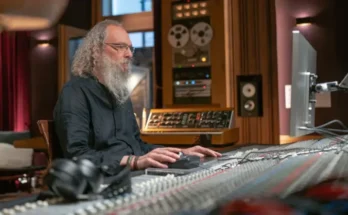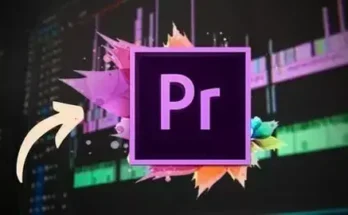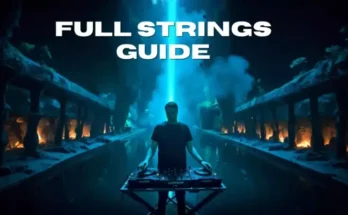Learning To Dj: Beginner To Intermediate For Electronic Djs TUTORiAL
English | Size: 11.87 GB | Duration: 10h 33m
Accelerate your DJ journey, learn to beat match, transition, place mixes, apply EQ + FXs, promote yourself + find gigs.
What you’ll learn
Identify the similarities and differences between modern DJ equipment such as DJ mixers, CDJs, turntables, and DJ controllers
Master the art of beat matching while learning essential technical skills such as EQ, song structure, phrasing, key, tempo
Arm yourself with new transition techniques such as blending, cuts and overlays
Understand the different types of mix placement strategies and placements to avoid
Apply and grasp advanced techniques such as the harmonic mixing system using Open Key Notation
Learn a basic framework to identify differences between House, Techno, Hard Dance & other electronic music genres and learn about their origins
Improve your music discovery and library building process with an overview of major channels for IDing incredible new tracks
Get to know the best platforms to build an online presence and how to build an offline presence to grow your brand as a DJ and find collaborators + gigs
Learn how to record, mix and master your DJ sets to share and receive actionable feedback for improvement
Requirements
Ideally some kind of DJ equipment. For example, a basic DJ controller (e.g., Pioneer DDJ 200, 400; Numark Mixtrack Pro); a pair of basic CDJs and 2 channel mixer, or pair of turn tables
Passion and interest in core electronic dance music – we focus mainly on house, techno and their siblings and less top 40/hip-hop/pop..
(optional) A musically obsessed personality!
Description
Welcome to Learning To DJ’s Beginner to Intermediate course for electronic music DJs. This course provides a comprehensive overview of DJing for the passionate music fan, beginner or novice DJ who wants to make the transition from beginner to an intermediate level of DJ knowledge or the intermediate DJ who is looking for a catalogue of content to backfill their self-taught knowledge. In this course, you will be introduced to your instructor Robert (aka. ROBDEEP), who has over 10 years of experience DJing as a passionate hobbyist and more recently advanced his skills into music production. In this course you will:Discover some of the history behind DJing and what it means to be a DJ, and why musical passion is so important.Get a high level overview of a variety of DJ equipment like CDJs, Turntables, DJ Mixers, headphones and DJ Controllers. Drive co-pilot in our overview of available free DJ softwares to aid your choice in picking a piece of software as well as what’s available in the marketplace todayFinally understand and explain the difference between producers and DJs in their roles, responsibilities and how they are evaluatedObtain a high level overview of music media and the technical aspects of how it works including: Vinyl, CDs, MP3s & WAV formats, Analog vs. Digital & streaming.Understand the basic concepts of tempo & key and why they are important to DJ mixesLearn about how to count beats, bars and the fundamental electronic music rhythm of “four on the floor”Master the art of beat matching using conceptual and practical examples including course provided resources to help you practiceBegin to analyze track structure from a producer and DJ perspective to ensure proper selection and mixing habitsArm yourself with song transitions such as blending, cuts and overlays to add variety to your mixesGet an overview of the theory of phrasing, and how it helps to time your transitionsIdentify 3 basic types of mix placement strategies and when they can be used to effectively to build great sounding sets as well as what 3 placements to avoid!Master 4 basic DJ effects (FX) of Reverb, Echo, Delay, & High / Low Pass Filters by getting a theoretical background and idea for their practice application in DJ sets (without over doing it!)Gain 3 handy new tricks to build tension and intrigue in your DJ sets leading up to and playing along with transitionsTake a second to appreciate and understand the foundation of electronic music: samples & loops, learn how to use them in practiceUnderstand how to study the dance floor, what the typically anatomy looks like energetically, read the room and reason with requests Level up your game and learn a basic 3-roster artist framework differentiating between opening DJs, mid-liners & headliner DJs and what each of them doBecome a music discovery machine by identifying the primary venues that artists are distributing their music on as well as how to use resources like Record Pools, Record Shops & DJ mixes onlineBegin to craft your set’s with intriguing questions to influence your selections and build artistry into your performancesGet an idea of what track energy levels are and why they are important to the emotional arc & story telling of your DJ mixUsing the course framework, break down the 4 major genres of electronic dance music: house, techno, hard dance/hardcore & other gaining a historical basis and appreciation for their rootsTame and build the music library of your dreams by understanding basic digital library building blocks, characteristics to classify music, playlist building strategies and some best practices for your music libraryRecord, mix, master and share your DJ mixes as well as how and where to ask for actionable feedback to improveLearn about some great places to build your online presence and how to build an offline presence in the interest of growing as a DJCompassionately navigate the macro headwinds of modern DJing by getting some information on how you can show up, support and integrate into your local community in the interest of establishing great relationships and to hopefully land gigs!Reflect on your DJ journey, set some goals and bring music to the world!This course is aimed at the passionate student and includes a set of course resources including diagrams and practice tracks. Please note: this course focuses primarily on core dance music genres such as House, Techno and their siblings and does NOT focus on radio top 40 / hip-hop / pop type of music. While the concepts are transferable, the majority of our examples are centered around house music so just keep that in mind if you are a prospective student :).—DisclaimerThe information provided by the instructor Robdeep and Learning to DJ team (the “L2DJ team”, “we”, “us”, or “our”) in this course is provided for general informational purposes only. All information in this course is provided in good faith, however we make no representation or warranty of any kind, express or implied, regarding the accuracy, adequacy, validity, reliability, availability or completeness of any information on the Site. UNDER NO CIRCUMSTANCE SHALL WE HAVE ANY LIABILITY TO YOU FOR ANY LOSS OR DAMAGE OF ANY KIND INCURRED AS A RESULT OF USE IN THIS COURSE OR RELIANCE ON ANY INFORMATION PROVIDED ON THE SITE. YOUR USE OF THE SITE AND COURSE AND YOUR RELIANCE ON ANY INFORMATION IN THIS COURSE IS SOLEY AT YOUR OWN RISK. Provided course resources (the “course resource package”, “resources”) such as diagrams or practice music are copyrighted and for student personal and educational use only – they may not be reproduced, distributed, transmitted, or otherwise exploited for any commercial purpose without the express written consent of L2DJ team. The course resource package is provided “as is” and the L2DJ team disclaims all warranties, including any implied warranties of merchantability, fitness for a particular purpose, or non-infringement.
Overview
Section 1: Course Introduction
Lecture 1 Course Promo
Lecture 2 Course Syllabus Overview
Lecture 3 Administrative Resources – Oh My!
Section 2: Module 1 – Introduction to DJing
Lecture 4 Lesson 1.1 – What is DJing?
Lecture 5 Lesson 1.2.0 – Introduction to DJ Hardware
Lecture 6 Lesson 1.2.1 – Exploring CDJs
Lecture 7 Lesson 1.2.2 – Dusting off the Turntable
Lecture 8 Lesson 1.2.3 – Keeping it Cool with DJ Controllers
Lecture 9 Lesson 1.2.4 – The Maestro DJ Mixer
Lecture 10 Lesson 1.2.5 – Hearing Through Your Headphones
Lecture 11 Lesson 1.2.6 – Lesson Recap
Lecture 12 Lesson 1.3.0 – DJs use Software?
Lecture 13 Lesson 1.3.1 – Overview of Traktor DJ 2
Lecture 14 Lesson 1.3.2 – Overview of Virtual DJ
Lecture 15 Lesson 1.3.3 – Overview of RekordBox
Lecture 16 Lesson 1.3.4 – Overview of Mixxx
Lecture 17 Lesson 1.3.5 – Overview of Djay Pro
Lecture 18 Lesson 1.3.6 – Software Outro
Lecture 19 Lesson 1.4.0 – Media Formats for DJs
Lecture 20 Lesson 1.4.1 – Talk Vinyl to Me Baby
Lecture 21 Lesson 1.4.2 – Understanding CDs
Lecture 22 Lesson 1.4.3 – Analog vs. Digital (Warning: Dragons Ahead!)
Lecture 23 Lesson 1.4.4 – MP3 vs. Wav Formats
Lecture 24 Lesson 1.4.5 – Streaming, the New Kid on the block
Lecture 25 (optional) Lesson 1.5.0 – DJ Setup!
Lecture 26 (optional) Lesson 1.5.1 – Setting up your CDJs & Mixer
Lecture 27 (optional) Lesson 1.5.2 – Setting up your Turntable & Mixer
Lecture 28 (optional) Lesson 1.5.3 – Setting up your DJ Controller
Lecture 29 Lesson 1.6.0 – DJs vs. Producers (Warning: Dragons Ahead!)
Lecture 30 Lesson 1.6.1 – What do producers do… anyway?
Lecture 31 Lesson 1.6.2 – What do DJs do… anyway?
Section 3: Module 2 – Fundamental DJ Technical Skills
Lecture 32 Module 2 – Introduction
Lecture 33 Lesson 2.1.1 – What is Tempo?
Lecture 34 Lesson 2.1.2 – What is Key?
Lecture 35 Lesson 2.2.1 – Four on the Floor
Lecture 36 Lesson 2.2.2 – Beats & Bars
Lecture 37 Lesson 2.3.1 – Beat Matching
Lecture 38 Lesson 2.3.2 – Automatic Beat Matching (sync)
Lecture 39 (optional) Lesson 2.3.3 – Vinyl Beat Matching
Lecture 40 Lesson 2.4.0 – Song Structure & Phrasing Intro
Lecture 41 Lesson 2.4.1 – Song Structure In Theory
Lecture 42 Lesson 2.4.2 – Song Structure In Practice
Lecture 43 Lesson 2.4.3 – Phrasing In Theory
Lecture 44 Lesson 2.4.4 – Phrasing In Practice
Lecture 45 Lesson 2.5.0 – All About Cueing
Lecture 46 Lesson 2.5.1 – Cueing in Headphones
Lecture 47 Lesson 2.5.2 – Cue Points & Hot Cues
Lecture 48 Lesson 2.6.1 – EQing in the Studio
Lecture 49 Lesson 2.6.2 – EQ in Practice
Lecture 50 Lesson 2.6.3 – A Word About Clipping
Section 4: Module 3 – Mixing Techniques
Lecture 51 Module 3 – Introduction
Lecture 52 Lesson 3.1.1 – Transitions: Blending in Theory
Lecture 53 Lesson 3.1.2 – Transitions: Blending in Practice
Lecture 54 Lesson 3.1.3 – Transitions: Cutting in Theory
Lecture 55 Lesson 3.1.4 – Transitions: Cutting in Practice
Lecture 56 Lesson 3.1.5 – Transitions: Overlays in Theory
Lecture 57 Lesson 3.1.6 – Transitions: Overlays in Practice
Lecture 58 Lesson 3.1.7 – Equalization (EQ)
Lecture 59 Lesson 3.1.8 – Final Thoughts
Lecture 60 Lesson 3.2.0 – Mixing Placement Intro
Lecture 61 Lesson 3.2.1 – Intro-Outro Placement in Theory
Lecture 62 Lesson 3.2.2 – Intro-Outro in Practice
Lecture 63 Lesson 3.2.3 – Structured Mixing in Theory
Lecture 64 Lesson 3.2.4 – Structured Mixing in Practice
Lecture 65 Lesson 3.2.5 – Melodic Blending in Theory
Lecture 66 Lesson 3.2.6 – Common Placements Mistakes
Lecture 67 Lesson 3.2.7 – A BAD Mix Placement (demo)
Lecture 68 Lesson 3.3.0 – Intro to Effects (FX)
Lecture 69 Lesson 3.3.1 – What on earth are FXs?
Lecture 70 Lesson 3.3.1 – A Final Word on DRY-WET
Lecture 71 Lesson 3.3.2 – Reverb in Theory
Lecture 72 Lesson 3.3.3 – Reverb in Practice
Lecture 73 Lesson 3.3.4 – Echo & Delay in Theory
Lecture 74 Lesson 3.3.5 – Echo & Delay in Practice
Lecture 75 Lesson 3.3.6 – Filters in Theory
Lecture 76 Lesson 3.3.7 – Filters in Practice
Lecture 77 Lesson 3.4.1 – Practice Technique: Cut & Tease
Lecture 78 Lesson 3.4.2 – Practice Technique: Fakeout
Lecture 79 Lesson 3.4.3 – Practice Technique: Mashups
Section 5: Module 4 – Advanced DJ Topics
Lecture 80 Module 4 – Introduction
Lecture 81 Lesson 4.1.1 – Loop-Loop-Looping in Theory
Lecture 82 Lesson 4.1.2 – Looping in Practice
Lecture 83 Lesson 4.2 – So what’s your Mix Rate?
Lecture 84 Lesson 4.3.0 – Can Ya Read The Crowd?
Lecture 85 Lesson 4.3.1 – Anatomy of the Dancefloor
Lecture 86 Lesson 4.3.2 – Reading The Room
Lecture 87 Lesson 4.3.3 – Will You Play …? (About Requests)
Lecture 88 Lesson 4.4.0 – Harmonic Mixing Introduction
Lecture 89 Lesson 4.4.1 – Why Mix Harmonically Anyway?
Lecture 90 Lesson 4.4.2 – The Circle of Fifths & Open Key Notation
Lecture 91 Lesson 4.4.3 – Using Open Key System
Lecture 92 Lesson 4.5.0 – Understanding Gigs & Performances
Lecture 93 Lesson 4.5.1 – Anatomy of a Gig
Lecture 94 Lesson 4.5.2 – Feeling the Evening (CAN YOU FEEL IT!??!)
Lecture 95 Lesson 4.5.3 – Openers, Mid-liners, Headliners, Oh my!
Section 6: Module 5 – Music Discovery, Selection & Flow
Lecture 96 Module 5 – Introduction
Lecture 97 Lesson 5.1.0 – Dang Son! Where’d Ya Find This!?
Lecture 98 Lesson 5.1.1 – A Moment To Remember Your Musical Passion
Lecture 99 Lesson 5.1.2 – Discovery via Soundcloud
Lecture 100 Lesson 5.1.3 – Discovery via Bandcamp
Lecture 101 Lesson 5.1.4 – Discovery via DJ Mixes
Lecture 102 Lesson 5.1.5 – Discovery via Record Pools
Lecture 103 Lesson 5.1.6 – Discovery via Record Shops @ Invisible City Records!
Lecture 104 Lesson 5.1.7 – Where else?
Lecture 105 Lesson 5.2.0 – Building a Set
Lecture 106 Lesson 5.2.1 – What to consider when building a set
Lecture 107 Lesson 5.2.2 – Can You FEEL the Track Energy!?
Lecture 108 Lesson 5.2.3 – Integrating Your Set Into The Evening
Lecture 109 Lesson 5.2.4 – Let’s Build a Set In RecordBox
Lecture 110 Lesson 5.3.0 – Genres, Genres, Genres (Warning: Dragons ahead!)
Lecture 111 Lesson 5.3.1 – Our Simple Genre Map
Lecture 112 Lesson 5.3.2 – “House is a FEELING” (Genre: House)
Lecture 113 Lesson 5.3.2 – “Technofy first yourself, then the world” (Genre: Techno)
Lecture 114 Lesson 5.3.3 – “It ain’t too loud!” (Genre: Hard Dance & Hardcore)
Lecture 115 Lesson 5.3.4 – Other Electronic Music
Lecture 116 Lesson 5.4.0 – Taming Your Music Library
Lecture 117 Lesson 5.4.1 – Building Blocks of A Library
Lecture 118 Lesson 5.4.1 – Building Blocks in Rekordbox
Lecture 119 Lesson 5.4.2 – Characteristics of Music
Lecture 120 Lesson 5.4.3 – Library Best Practices
Section 7: Module 6 – Growing as a DJ
Lecture 121 Module 6 – Introduction
Lecture 122 Lesson 6.1.0 – Recording Your DJ Set
Lecture 123 Lesson 6.1.1 – Options for Recording
Lecture 124 (optional) Lesson 6.1.2 – Recording Checklist & Things to Be Aware Of!
Lecture 125 Lesson 6.1.3 – Basic Mixing and Mastering Your DJ Set in Audacity
Lecture 126 Lesson 6.2.0 – Sharing Your DJ Set
Lecture 127 Lesson 6.3.0 – Marketing Yourself as a DJ
Lecture 128 Lesson 6.3.1 – Building an Online Presence
Lecture 129 Lesson 6.3.2- Building an Offline Presence
Lecture 130 Lesson 6.3.3 – Building your Presence through Events
Lecture 131 Lesson 6.4.0 – Finding DJ Gigs
Lecture 132 Lesson 6.4.1 – Why Getting Noticed is Hard
Lecture 133 Lesson 6.4.2 – Some Ideas / Tactics for Getting Gigs
Lecture 134 Lesson 6.4.3 – A few additional ideas / tactics
Section 8: Module 7 – Reflecting on Your Journey
Lecture 135 Lesson 7.1.0 – Reflecting on Your DJ Journey
Lecture 136 Lesson 7.2.0 – Setting Goals
Lecture 137 Lesson 7.3.0 – Ongoing Learning Resources
Lecture 138 Lesson 7.4.0 – Congratulations !!!
Novice and Beginner DJs looking for a comprehensive course on the major areas of DJing related to house and core dance music to level up their skills and knowledge from an experienced instructor,Intermediate DJs looking to fill in the gaps of their knowledge after being self-taught and/or looking for resources on building themselves for gigs and beyond,Prospective DJs who want an overview of what DJing is before they decide whether to buy their first set of DJ kit
Please REPORT in Comment Broken Links




